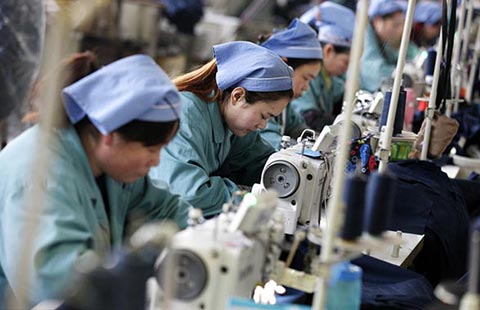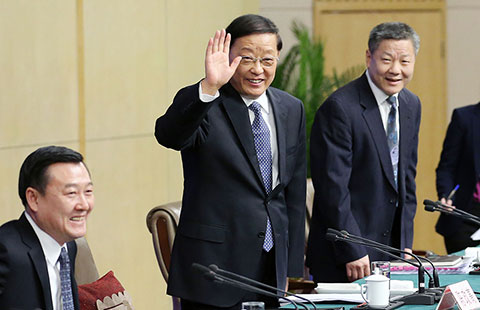China's home prices continue to rise
(Xinhua) Updated: 2016-03-18 17:26
 |
|
Photo taken on Mar 12, 2016 shows residential building in Guangzhou, capital of south China's Guangdong province. China's housing market continued to warm in February, with more than half of surveyed major cities reporting month-on-month rises in new home prices. [Photo/Xinhua] |
Of the 70 large and medium-sized cities surveyed in February, new home prices climbed month on month in 47, up from 38 the previous month, the National Bureau of Statistics (NBS) said Friday.
Meanwhile, 15 reported month-on-month price declines, down from 24 in January, according to NBS data.
On a yearly basis, 32 cities posted new-home price increases and 37 reported decreases, compared with 25 and 45 in January.
New-home prices soared 57.8 percent year on year in the southern city of Shenzhen, the sharpest increase last month among all major cities, followed by Shanghai and Beijing, where prices surged 25.1 percent and 14.2 percent year on year. The northeastern city of Dandong registered the steepest price decline, dropping by 3.9 percent.
Prices for existing homes also warmed up last month, with 34 cities reporting higher month-on-month prices and 28 reporting lower prices.
"Home prices remained markedly divergent in different cities due to varied market conditions, and the gap continues to widen," said NBS senior statistician Liu Jianwei.
Analysts attributed the top-tier market revival to government easing efforts, higher expectations for price rises, as well as speculative and investment demand.
Lower borrowing costs, plus plenty of latent demand, are the primary reason for the upturn in first-tier cities, where better-paid jobs bring population inflow, said Li Yujia, an analyst with the Shenzhen Real Estate Research Center.
China's property market started to recover in the second half of 2015 after cooling for more than a year, boosted by government support measures, including interest rate cuts and lower deposit requirements.
Last month, taxes on some property transactions were slashed and further reductions to the minimum down payments for first- and second-time home buyers were announced.
Increased transaction volume further reduced inventories in top-tier cities. As of the end of January, first-tier cities saw unsold new homes fall 12.9 percent year-on-year, but the inventory in second- and third-tier cities declined by only 3.9 percent and 0.8 percent respectively, according to data from E-house China R&D Institute.
Qu Hongbin, chief China economist at HSBC, predicted housing policies will loosen further in the coming months.
"Depending on the scale of the policy easing, housing investment could stabilize or even stage a moderate recovery in 2016," Qu wrote in a research note.
- Lenovo reorganizes to better tackle VR and other emerging tech
- New tracing system to guarantee food safety
- Chinese shares close higher Friday
- China needs more e-bikes, not cars, former minister says
- Pet care points to a rewarding career track
- Hainan Airlines will recruit 300 foreign flight attendants
- Number of Chinese websites exceeds 4.2 million
- Alibaba spreads its wings into VR sector
















